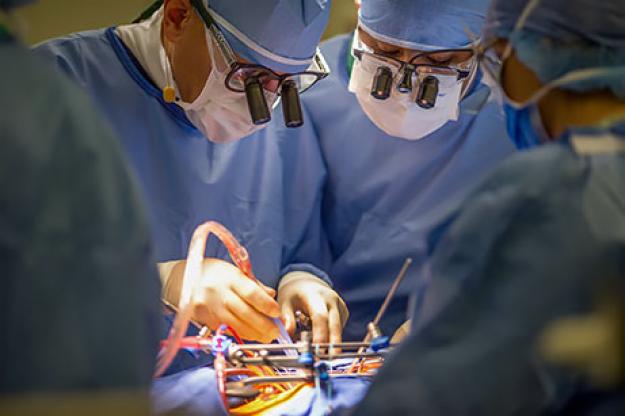Mitral Valve Repair vs. Replacement Rates
Numerous studies that have compared long term-survival of patients undergoing mitral valve repair or replacement have consistently shown a survival benefit with mitral valve repair. The ‘repair rate’ is thus an important variable. The ideal repair technique should be applicable to over 90% of cases. Repair rate statistics are not integral to the technique and vary from surgeon to surgeon. Unfortunately, most series do not include repair rates and prospective databases generally do not differentiate etiologies of mitral disease, such that it is not possible to accurately define repair rates for degenerative disease. We believe that the overall replacement rate in degenerative disease may be as high as 50%.
In a review of United States practice in 1999 and 2000, 42.4% of patients having isolated mitral valve surgery for valve regurgitation had a valve repair (all etiologies of mitral disease)1. Similarly, in the United Kingdom, 35% of mitral procedures were repairs in 2000-20012. In the United Kingdom, more mechanical mitral valve replacements were performed than mitral repairs (ratio 6:5). We believe that as degenerative disease often occurs in young patients (who are the usual candidates for mechanical valves), and as the incidence of rheumatic disease has declined substantially in western countries, a considerable number of these mechanical mitral valve replacements are likely performed for degenerative disease. Indeed a review of contemporary mitral valve replacement literature shows substantial proportions of replacements for degenerative disease. For example, Bouchard and associates3 in a series examining outcomes of mitral valve replacement, include 213 replacements for degenerative disease over a ten-year period. In another recent study, Yun et al4 randomized 47 patients over two years to two forms of chordal sparing valve replacement; 31 of these patients had degenerative disease. Finally in a series of 154 bioprosthetic implants reported by Rizzoli et al, 34 were performed for degenerative disease5. Repair rates in large published series generally range from 85% to 90%, although most include historical patients from the 1980s.
Our philosophy is that repair should be attempted in all degenerative valves. Using this approach we have achieved a 99.5% repair rate over a 4 year period. For mitral valve repair to be the standard of care for degenerative disease, it should be available and applicable to all patients. Certainly any surgeon performing surgery for asymptomatic degenerative disease should have > 95% repair rate for the lesion present, as mitral repair is the only therapy currently advisable in this group6. Current national repair rates, however, suggest that there remains a considerable body of surgical practice that has not embraced systematic repair of degenerative valves.
- 1Savage EB, Ferguson TB, Jr., DiSesa VJ. Use of mitral valve repair: analysis of contemporary United States experience reported to the Society of Thoracic Surgeons National Cardiac Database. Ann Thorac Surg 2003 March;75(3):820-5.
- 2 Keogh BE, Kinsman R. Fifth National Adult Cardiac Surgical Database Report 2003. Henley-on-Thames: Dendrite; 2004.
- 3Bouchard D, Pellerin M, Carrier M et al. Results following valve replacement for ischemic mitral regurgitation. Can J Cardiol 2001 April;17(4):427-31.
- 4 Yun KL, Sintek CF, Miller DC et al. Randomized trial comparing partial versus complete chordal-sparing mitral valve replacement: effects on left ventricular volume and function. J Thorac Cardiovasc Surg 2002 April;123(4):707-14.
- 5Rizzoli G, Bottio T, Vida V et al. Intermediate results of isolated mitral valve replacement with a Biocor porcine valve. J Thorac Cardiovasc Surg 2005 February;129(2):322-9.
- 6Hayek E, Gring CN, Griffin BP. Mitral valve prolapse. Lancet 2005 February 5;365(9458):507-18.
